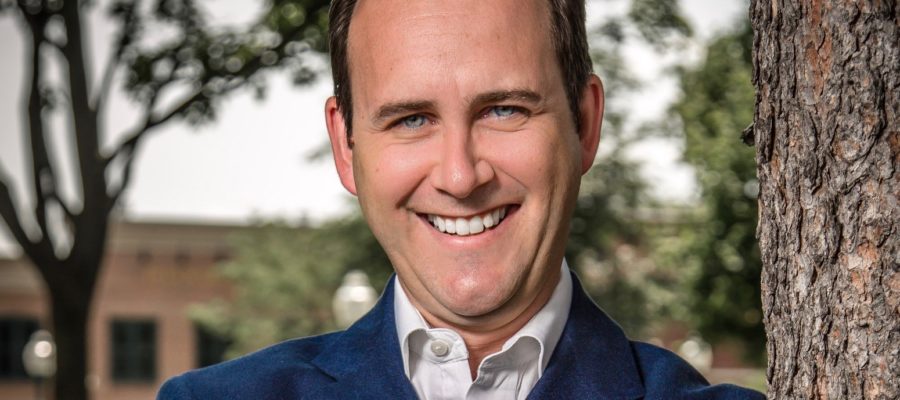When Leon Shapiro and I tackled the subject of how and why formal peer groups for CEOs and business leaders work so well in The Power of Peers, our research revealed two important findings: 1) The Learning-Achieving Cycle common to high performing groups; and, 2) What we called the Five Factors necessary for making the Learning-Achieving reinforcing loop possible.
After conducting nearly 100 self-assessment workshops for peer groups since the book was published, I’ve learned that the Five Factors are more than just components of a condition, they are a system onto themselves. What’s more, this system (with minor modifications) provides insights into what drives high performing teams.
The five factors were originally presented independently (reinforcing one another of course) yet described as if one had little to do with the other. The Five Factors included: 1) Having the right people in the room (people who share common values and a purpose for being in the group, yet who are diverse in their own ways); 2) A Safe and Confidential Environment – a place where one feels safe to be open and vulnerable and where confidentiality is sacrosanct; 3) Valuable interaction – while providing emotional safety is critical, here we talked about the quality of the topics discussed, the discipline of asking great questions, and the tangible outcomes realized by the group members; 4) Accountability – not accountability to the leader of the group, but to the other members – a solemn promise to one another to be present and bring their A games to each and every meeting; 5) Having a smart guide, someone who served as a servant leader of the group and as the steward of the other four factors.
Today, I see the Five Factors not simply as overlapping, but as a system, much like the Learning-Achieving Cycle:
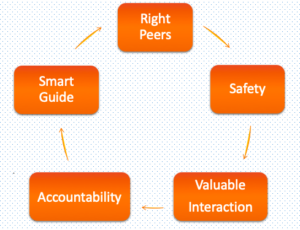 It starts off with having the right people, who come to know each other and trust one another enough to feel safe. This feeling of safety inspires and enables deeper conversations about the kind of serious topics that all too often never happen in the context of our daily lives. As group members grow to care about one another and their respective aspirations, it inspires each of them to bring their A games to every meeting, knowing that their colleagues are prepared to do the same. Their currency with one another lies in this place where everyone helps each other achieve new heights. The smart guide’s role as the servant leader is essentially to serve as the steward of the other four factors by driving this reinforcing loop. He/she makes sure that the group is always populated with people who add value, that the safe environment is never taken for granted, that members come prepared to share their toughest challenges and greatest opportunities, and that a context which allows for a culture of growing group accountability is able to flourish.
It starts off with having the right people, who come to know each other and trust one another enough to feel safe. This feeling of safety inspires and enables deeper conversations about the kind of serious topics that all too often never happen in the context of our daily lives. As group members grow to care about one another and their respective aspirations, it inspires each of them to bring their A games to every meeting, knowing that their colleagues are prepared to do the same. Their currency with one another lies in this place where everyone helps each other achieve new heights. The smart guide’s role as the servant leader is essentially to serve as the steward of the other four factors by driving this reinforcing loop. He/she makes sure that the group is always populated with people who add value, that the safe environment is never taken for granted, that members come prepared to share their toughest challenges and greatest opportunities, and that a context which allows for a culture of growing group accountability is able to flourish.
So you may be asking the same thing I did: Do these five group factors, presented as a reinforcing loop, apply to teams and offer guidance to team leaders? With some minor adjustments, I believe they do. Here’s how it plays out for teams:
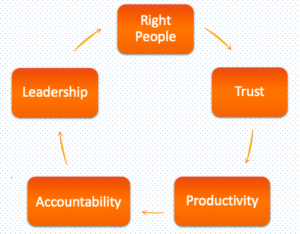
At your company, it’s about more than hiring good people, it’s about securing the right people. This involves understanding the difference between those who succeed at your company and those who don’t – despite their impressive resume and amazing interviewing skills. Having the right people is great, but now you have to get them to work together, which involves getting them to know and trust one another.
Once you have that, you can start looking at how you can help this team achieve higher levels of productivity and commitment to excellence. As a leader, think of tending a garden. Your job is to provide the right amount of water, sunlight, food, etc. to make your garden flourish. If you notice a plant not growing to its potential in one part of the garden, you move it to a better spot. I’ll take the gardener over the command and control leader any day – and so will your employees.
Now that your team is productive and they realize they can achieve a level of excellence that can only be obtained by working together, they drive each other’s level of performance to new heights, making the team as a whole that much stronger. The team leader plays the same role as the smart guide, serving as the steward of the other four factors, continually driving the reinforcing loop.
The best teams I’ve studied from business and in sports have all of these factors firing on all cylinders. Don’t let this throw you for a reinforcing loop! Think about how these factors play into your organizational teams and tell us what you find out!

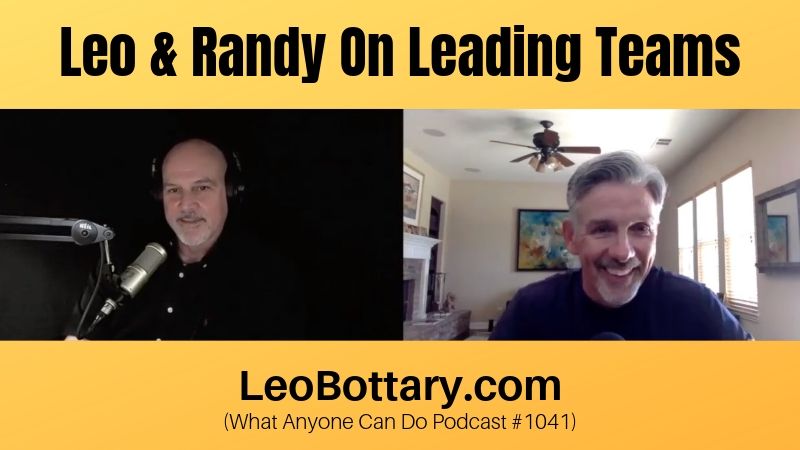


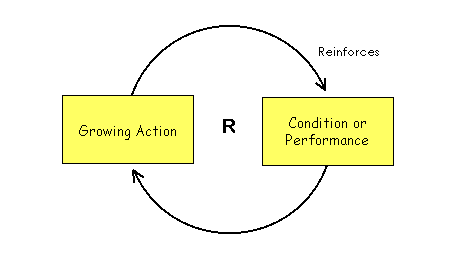
 It starts off with having the right people, who come to know each other and trust one another enough to feel safe. This feeling of safety inspires and enables deeper conversations about the kind of serious topics that all too often never happen in the context of our daily lives. As group members grow to care about one another and their respective aspirations, it inspires each of them to bring their A games to every meeting, knowing that their colleagues are prepared to do the same. Their currency with one another lies in this place where everyone helps each other achieve new heights. The smart guide’s role as the servant leader is essentially to serve as the steward of the other four factors by driving this reinforcing loop. He/she makes sure that the group is always populated with people who add value, that the safe environment is never taken for granted, that members come prepared to share their toughest challenges and greatest opportunities, and that a context which allows for a culture of growing group accountability is able to flourish.
It starts off with having the right people, who come to know each other and trust one another enough to feel safe. This feeling of safety inspires and enables deeper conversations about the kind of serious topics that all too often never happen in the context of our daily lives. As group members grow to care about one another and their respective aspirations, it inspires each of them to bring their A games to every meeting, knowing that their colleagues are prepared to do the same. Their currency with one another lies in this place where everyone helps each other achieve new heights. The smart guide’s role as the servant leader is essentially to serve as the steward of the other four factors by driving this reinforcing loop. He/she makes sure that the group is always populated with people who add value, that the safe environment is never taken for granted, that members come prepared to share their toughest challenges and greatest opportunities, and that a context which allows for a culture of growing group accountability is able to flourish.
